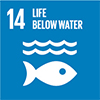La biodiversité fait référence aux différentes formes de vie sur Terre à tous les niveaux – des gènes aux écosystèmes, aux plantes et aux animaux. Cette grande diversité des formes de vie est essentielle à la santé et à la survie de notre planète.
- Over half of global GDP is nature-dependant
- We are accustomed to “carbon-neutral”, we must now aim to be “nature-positive”
- Increasing risk of litigation and regulatory change for businesses is causing damage
- The size of the investment opportunity relies on three factors: demand, regulation and innovation
- For investing in biodiversity, the impact team has developed an investment process based on two interlinked investible themes: Protect and Restore
- Unique strategic oversight is provided by the new Biodiversity Committee
What is biodiversity?
Biodiversity provides an astounding range of essential goods and services for society:
- Insects and bees pollinate our crops – 75% of our food relies on animal pollination
- Worms are crucial to soil fertility – and the healthy biodiversity of soil prevents landslides, flooding and desertification
- 70% of cancer drugs are inspired by nature – avoiding extinction risk is critical for this to continue
These ‘ecosystem services’ support food and water security, regulate climate patterns and contribute to pollution breakdown, and all of this for no charge! The World Economic Forum estimates that over half of global GDP is nature-dependant... the true figure could be much higher.
Is biodiversity healthy right now?
Biodiversity is in crisis. Alongside climate change, this is a major planetary emergency, as some key figures show:
- 68% drop in wildlife in the last 46 years
- 10 million hectares of land deforested every year (about the size of Germany)
- 11% of global GDP (some USD 6.6 trillion) in environmental damage caused annually by human activity
With climate change, we have all become accustomed to the concept of reducing our footprint and discussing the goal of “net zero”. The biodiversity crisis is still very new to many people and we must quickly adapt to the concept of “net zero for carbon, net gain for nature” if we are to avoid mass extinction and the associated economic hardship.
How does the loss and restoration of biodiversity translate to investments?
Risks associated with biodiversity loss
A decline in the ecosystem services that nature provides will initially pose a direct physical risk to businesses as harvests become more unreliable, weather patterns change and pollinators no longer support agriculture. The risk is both event-driven, e.g. flooding or drought, and longer-term, e.g. the reduction in rainfall caused by deforestation. The economic implications go far beyond “front-line” agriculture as businesses are the links in multi-national supply chains and support local livelihoods and tax income, so the reverberations are far-reaching.
As the investment industry adjusts to these physical risks, it is beginning to reassess the value of potentially vulnerable or stranded assets and make downward adjustments to their valuations, or even view them as liabilities. Consider the valuation shift of a consumer-facing business that pays no attention to biodiversity loss and as a result is vulnerable to both physical risks and reputational damage.
Lastly, as the depletion of nature becomes increasingly evident and communities begin to suffer the effects, there is an increasing risk of litigation and regulatory change for the businesses causing damage, e.g. fines for ocean dumping or illegal deforestation.
Opportunities from the protection and restoration of biodiversity
The size of the investment opportunity relies on three factors: demand, regulation, and innovation. It is evident that consumer interest in this topic is high and increasing due to the very tangible effects of species decline as put forward in high-profile documentaries. In the 2020 Union for Ethical Biotrade (UEBT) Biodiversity Barometer report, over 80% of respondents to the survey believe that companies have a moral obligation to have a positive impact on biodiversity.
The further good news is that key decision-makers are also aware of the biodiversity problem. Just as attention has turned to climate change in recent years, with a focus on increased data on carbon footprints and science-based target-setting at corporate, national and international level, there is a noticeable increase in recognition that a similar approach is needed for nature. With this awareness comes policy-setting, regulation and capital expenditure. As explained above, this involves an increased cost of doing business for some. For others – those which are helping to solve the problem – this potentially creates a multi-decade opportunity for superior growth and success as capital flows towards the “fixers” of the biodiversity crisis.
These “fixer” businesses can vary hugely, but typically have one thing in common – innovation and technology. This is what bridges the gap between the desire for change and the achievement of it. Examples of such fixers include companies delivering planet-friendly farming practices, those enabling urban spaces to be clean and supportive of nature, and those creating a more circular economy.
How do we identify the right stocks?
To find the best opportunities, we must first examine the root causes of biodiversity decline. Climate change and pollution, which destabilise ecosystems, are big factors, as are deforestation and other forms of land use change (largely for agriculture) which contribute to habitat loss, and over-exploitation of natural resources (the most obvious being overfishing).
The UBP Impact team has constructed an investment process based on two interlinked investible themes and seven industrial verticals, which focus on business models that are providing some of the solutions to these problems.
Protect
- Circular economy
- Planet-compatible utilities
- Sustainable management of natural resources
- Green cities and urban spaces
Restore
- Enablers of change
- Planet-friendly diets
- Sustainable food production
There are two dominant UN Sustainable Development Goals (SDGs) which underpin these themes:


These are supported by a further 4 SDGs:




The ideas generated from this process are then subject to our central IMAP scoring process, valuation and ESG stress tests before gaining a place in the Watch List and ultimately in the fund.
What aspects of the investment process are important to create a nature-positive strategy?
The agricultural sector, directly and indirectly, is responsible for the overwhelming majority of biodiversity loss. Everything from a T-shirt to a can of lemonade has a biodiversity footprint and so when we want to invest in shrinking this footprint, we must pay attention not solely to companies’ products and services, but to their entire supply chains. What a company sells is critically important, but how it gets that product to market is of equal relevance. Our response to this is to combine our proprietary IMAP impact assessment tool with deep, systematic engagement to support and accelerate transparency and disclosure of data relating to corporate value chains.
Engagement is not restricted to bilateral conversations with corporates. We recognise that for deep and meaningful change to occur, we must step out of our financial industry ‘silo’ and work together with other stakeholders to build a new, nature-positive business model. We have identified two biodiversity partners to help us achieve our goal. One is an on-the-ground conservation specialist and the other brings deep academic and policy-making skills. Each partner has the ability to inform the other and ultimately create a bank of knowledge that can be used by our investee companies. It is our belief that this triangulation of expertise is a unique and innovative approach and has the potential to catalyse positive change at scale.
Due to the complex and pioneering approach of our Biodiversity Restoration strategy, we believe it is vital that the team has sufficient external guidance and oversight for its biodiversity targets. To complement the team’s existing oversight structure comprising the Impact Advisory Board and the Investment Committee, a dedicated Biodiversity Committee has been established. Its purpose is to provide guidance and strategic direction for the specific area of biodiversity and, along with the investment team, it will be responsible for establishing a clear set of impact objectives and performance indicators.
Are there any challenges in a nature-positive approach to investment?
For all impact strategies (certainly in listed markets), obtaining standardised, audited non-financial data is a challenge. For the measurement of an improvement in biodiversity, this absence of data is compounded by the fact that no agreed method of measuring biodiversity net gain exists. However, as we enter the UN decade of ecosystem restoration and look forward to the debate at the COP 15 biodiversity conference, we can envisage a substantial increase in international focus on establishing a recognised measure, to compare with the clear “net zero” target for climate change.
Biodiversity-positive investment in the listed space is at an exciting but early stage. An important challenge for us is to harness the collective power of our biodiversity partners and investments to take us beyond conversation and aspiration and to the achievement of genuine, measurable change. We are confident that our unique process, robust oversight, and mission-driven team put us in an excellent position to deliver this.









